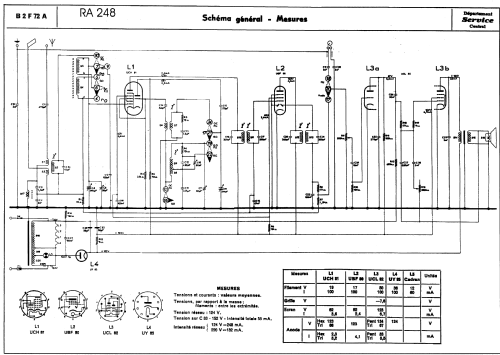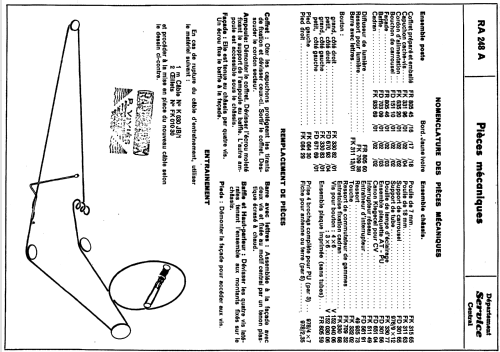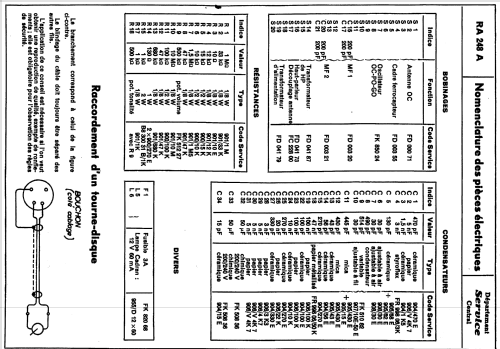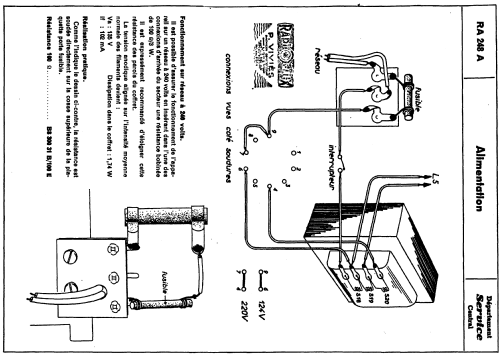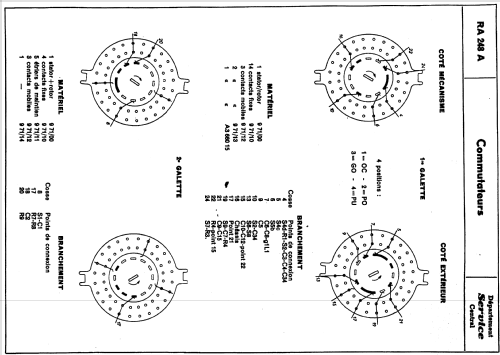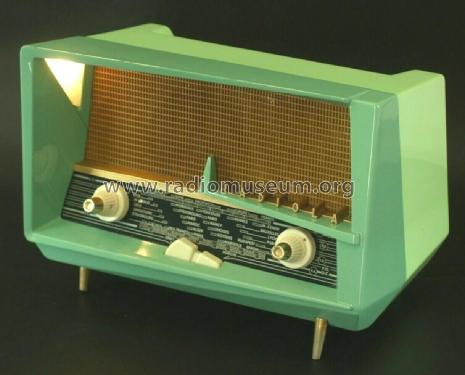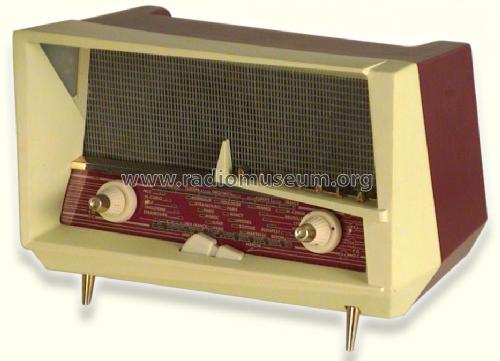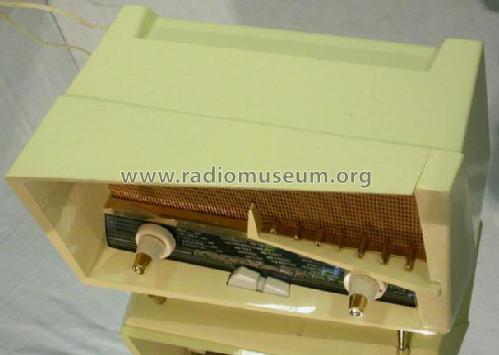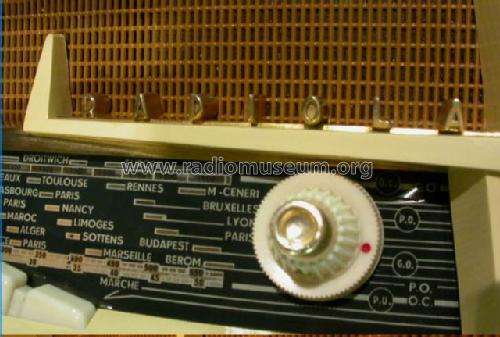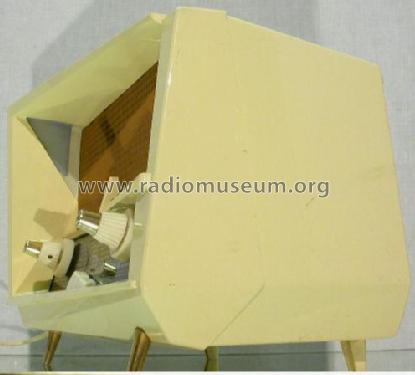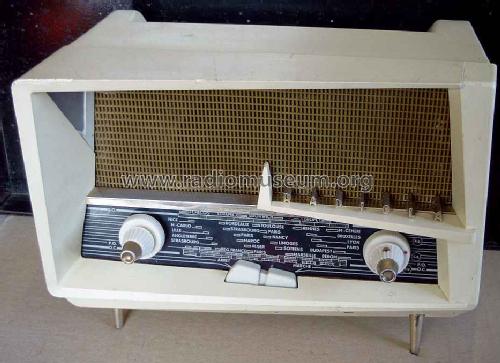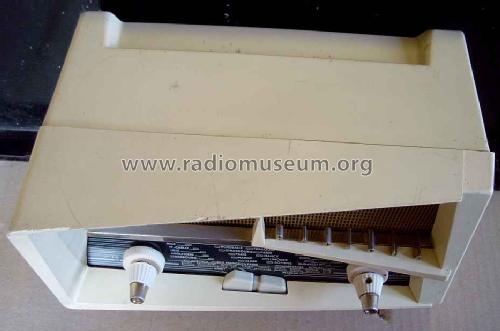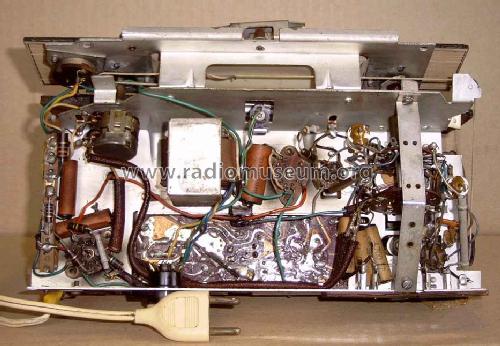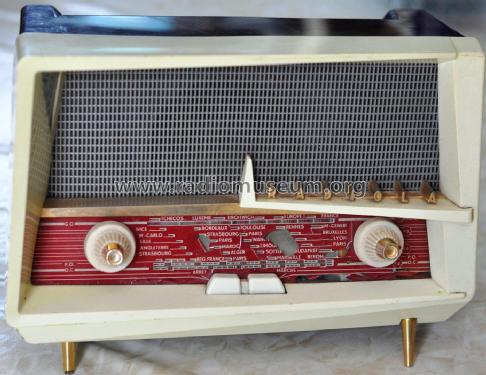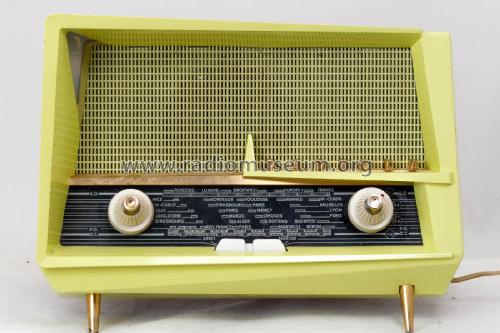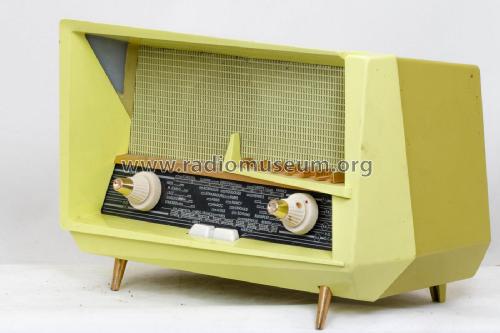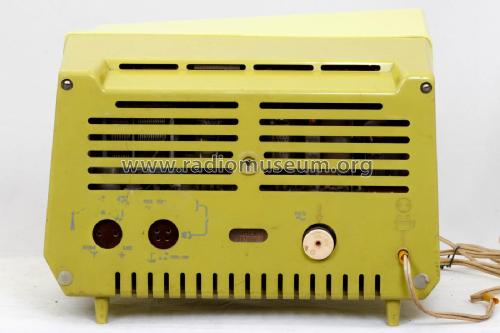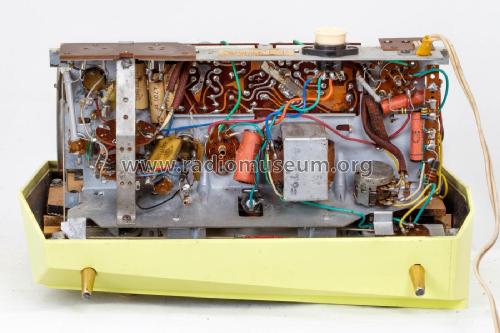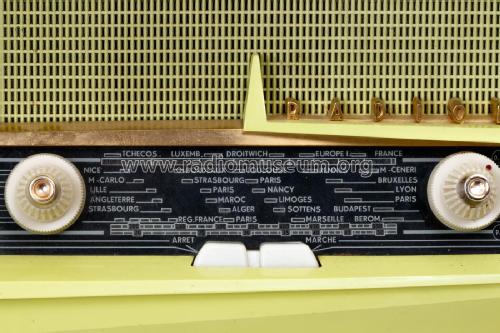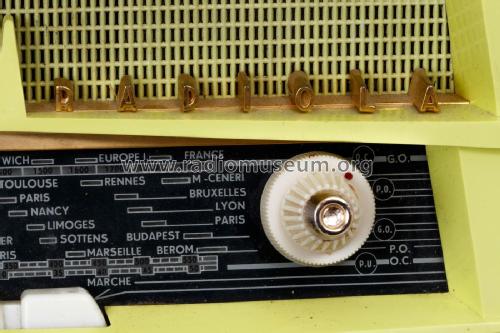Radiola RA248A
Radiola (marque)
- Paese
- Francia
- Produttore / Marca
- Radiola (marque)
- Anno
- 1958/1959

- Categoria
- Radio (o sintonizzatore del dopoguerra WW2)
- Radiomuseum.org ID
- 72017
-
- Brand: SFER
Clicca sulla miniatura dello schema per richiederlo come documento gratuito.
- Numero di tubi
- 4
- Principio generale
- Supereterodina (in generale); ZF/IF 455 kHz
- N. di circuiti accordati
- 6 Circuiti Mod. Amp. (AM)
- Gamme d'onda
- Onde medie (OM), lunghe (OL) e corte (OC).
- Tensioni di funzionamento
- Alimentazione a corrente alternata (CA) / 50 Hz: 116-132; 210-230 Volt
- Altoparlante
- AP magnetodinamico (magnete permanente e bobina mobile) / Ø 11.4 cm = 4.5 inch
- Potenza d'uscita
- 1 W (qualità ignota)
- Materiali
- Plastica (non bachelite o catalina)
- Radiomuseum.org
- Modello: Radiola RA248A - Radiola marque
- Forma
- Soprammobile compatto/con bordi arrotondati/midget senza pulsantiera/tastiera.<= 35 cm (Sometimes with handle but for mains only).
- Dimensioni (LxAxP)
- 280 x 207 x 180 mm / 11 x 8.1 x 7.1 inch
- Annotazioni
-
3 gammes d'ondes : OC de 19 à 51 m, PO de 185 à 575 m, et GO de 1150 à 1950 m. Cadre ferrocapteur de 24 cm, antenne plaque pour OC. HP de 114 mm, type 10 0060/42, Z = 3 Ω. Clavier à 2 touches basculantes. Éclairage par lampe 12 V 60 mA située à la partie supérieure du coffret.
Coffret et façade en polystyrène, trois exécutions :
- coffret bordeux, façade ivore
- coffret ivoire, jaune clair
- coffret jaune, façade vert
Le modèle Radiola a un coffret asymétrique plus stylé avec éclairage située dans le coin supérieur gauche du coffret. Son design a probablement été inspiré par l'architecte Le Corbusier, notamment son oevre pour l'exposition 1958 de Bruxelles parce qu'il a fait une maison semblable. Le Corbusier a conçu le pavillon Philips pour l'Exposition Universelle de Bruxelles de 1958 où cette radio était présentée (Philips et Radiola étaient la même chose). Nous n'avons pas trouvé un document officiel pour cette radio.
Hauteur 187 + 20 mm. Le dépliant mentionne dimensions de 295 x 215 x 180 mm.
Même châssis que modèle Philips B2F72A et modèle belge ACEC 5004.
Malgré le jeu de lampes série U (tous courants) ce modèle ne fonctionne que sur secteur alternatif 50 périodes par autotransformateur.
Info Ernst Erb: Same chassis as Philips B2F72A and the Belgian ACEC 5004. The front of the Radiola model with its wildly asymmetrical design is much more stylish than those of the other models. Radiola bears the light in the left corner, while Philips has the light in the middle. The Philips dial scale is black, with the same print as Radiola but the Radiola's color is red. There is a rocker switch in the center of the dial scale which looks like two push buttons.
The design was done by the famous Swiss born architect Le Corbusier on the occasion of the Brussels World Fair of 1958 - was a notice, we did not find proved. But he built a house standing in a lake which resembles the face of the radio and also the Philips pavilion of the 1958 Brussels Universal Expo where this radio was presented.
Normally we don't use the brand in the model name field of a radio. You just enter the model designation into "simple search". If you search for a specific Radiola model, use the "advanced search", and enter Radiola in the manufacturer field.
- Peso netto
- 3.5 kg / 7 lb 11.3 oz (7.709 lb)
- Bibliografia
- -- Original-techn. papers.
- Letteratura / Schemi (1)
- -- Original prospect or advert (Dépliant Technique Stéréo Musicale)
- Autore
- Modello inviato da Ernst Erb. Utilizzare "Proponi modifica" per inviare ulteriori dati.
- Altri modelli
-
In questo link sono elencati 858 modelli, di cui 568 con immagini e 276 con schemi.
Elenco delle radio e altri apparecchi della Radiola (marque)
Collezioni
Il modello Radiola fa parte delle collezioni dei seguenti membri.
